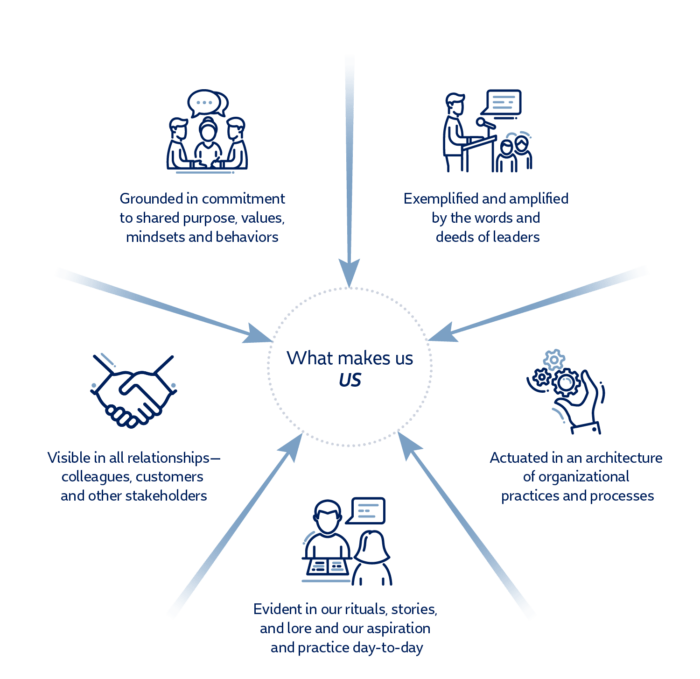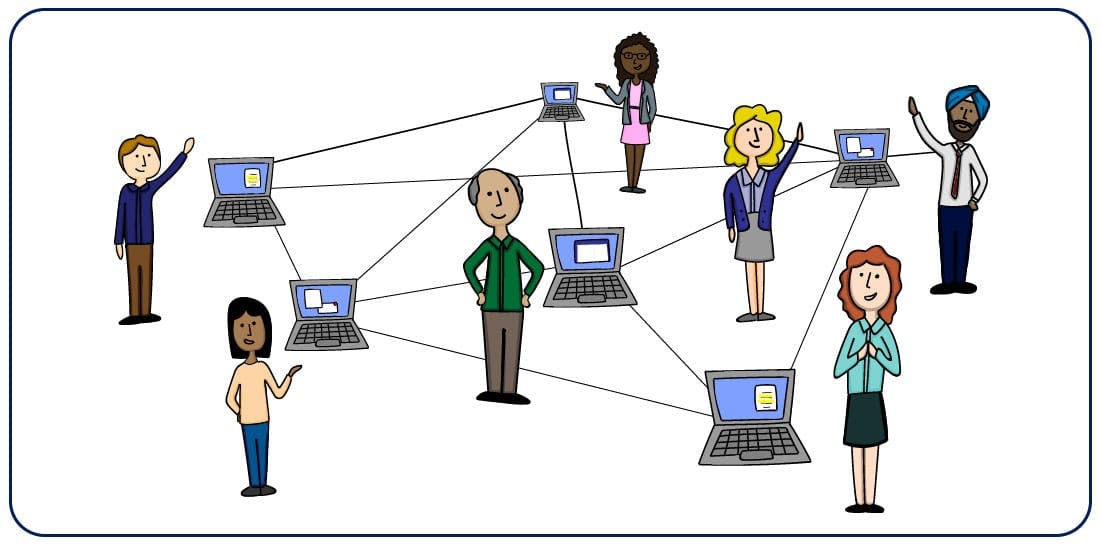Practical Ways to Strengthen Your Company Culture Right Now
Times of change are formidable moments. They show us who we are today and illuminate how we’d like to be better tomorrow. While the world around us feels strange and uncertain — with teams suddenly dispersed and working virtually more than ever — it’s a crucial time for leaders to double down on company culture and what makes ‘us’, ‘us’.
For leaders, leveraging this time to strengthen company culture is paramount. This may not be the most obvious or easiest thing to do — but it may be one of the smartest.
Here are five focus areas that can help you build and strengthen your company’s culture

Stay grounded in commitment to shared purpose, values, mindsets, and behaviors.
Why: Because your employees will be looking to you more than ever for a sense of stability and normalcy. Reinforcing your cultural components at this time will give them the sense of grounding today, while building credibility and community for the future. How:
- Know your company’s values. When was the last time you discussed your company’s values with your team? This is a timely opportunity to do that. If your organization has not established its fundamental values, now is the time to do so.
- Highlight a shared value each week. Ask team members to share how that value shows up in their personal lives and at work.
- Tell stories. Ask team members to share their greatest learnings during the last year.
Consider how your culture is visible in all relationships — colleagues, customers, and other stakeholders.
Why: The way we treat one another is essential to our ability to function well. Showing up as kind, sensitive, thoughtful, transparent, productive, optimistic people will go a long way in motivating others to do the same — and it will long be remembered when you emerge from this challenging time. This is your time to “be the brand” you want to be known for. How:
- Think about each of your stakeholder groups and have your team do the same. What do they need during this time? How can your team support that? A simple stakeholder map with guiding principles for how to communicate with each audience is a good place to start.
- Hold explicit discussions with your team about desired behaviors. As a team, identify what behaviors are expected for how they ‘show up’ with and for each other and stakeholder groups.
Featured Resource
Make your culture evident in your rituals, stories, and lore.
Why: Culture is always felt, but it’s often a silent presence. By intentionally speaking to it — in stories of real people demonstrating the behaviors that are so key to your culture — you ensure that the positive aspects of it remain top-of-mind. How:
- Rediscover your founding story. Storytelling is a great way to help employees internalize your culture.
- Don’t forget the fun. Human connection — and connection to humor, fun, and light-hearted moments — are often what we remember most. Think of ways to create moments of levity that will strengthen team members’ connections to each other.
- Give your rituals a unique name. At Blue Beyond, we have a practice of “stringing the beads.” This concept is our way of starting many of our meetings — by asking a prompt and hearing from each person on the call before we begin. The story behind our practice is that each time we come together, we create a unique necklace, bringing a bead of who we are and where we are at that point in time. Providing this type of intentionality and language deepens the connection and meaning of the moment.
Articulate your culture within your organizational practices and processes.
Why: How your organization is structured and how it functions are reflections of your culture. How:
- Take stock of your weekly, monthly, and quarterly meetings. Consider the audience, purpose, and participant roles for each of these meetings. Ask yourself: What’s working well? What’s missing? Are attendee roles clear?
- Get input from the team. Ask team members what’s working about your current operating model and norms — and what is not. Use this as an opportunity to assess what might need to shift in a virtual context.
Ensure culture is exemplified and amplified by leaders.
Why: Throughout our lifetimes, the biggest known impact to employee engagement has been the “say/do gap.” These times demand that employees see leaders behaving in a way — and making decisions — that support their words. Think about how you felt when a leader said one thing and his/her behavior or decisions showed something in conflict with that. How:
- Make sure all leaders fully understand and are “all in” on the aspects of your company’s culture, and its importance. These leaders could be your colleagues or your direct reports.
- Prepare, coach, and guide leaders. Help them articulate and amplify culture messages, and demonstrate the culture at work in their actions and ways of working.
- Create two-way feedback loops. Communication about culture needs to be two-way. Ensure leaders and employees understand how to share observations, improvements, questions, and suggestions — and that there is a clear process to demonstrate that input is heard, addressed, and/or being considered.
There are a lot of ways you can strengthen and amplify your company culture. You don’t have to do them all at once, but you should ensure that the “what” of your culture is well articulated.
Your team members will appreciate your effort to reinforce, articulate, and demonstrate what you stand for — especially during times of change.
For more information and tools, check out our Culture Change That Works eBook, or contact us
